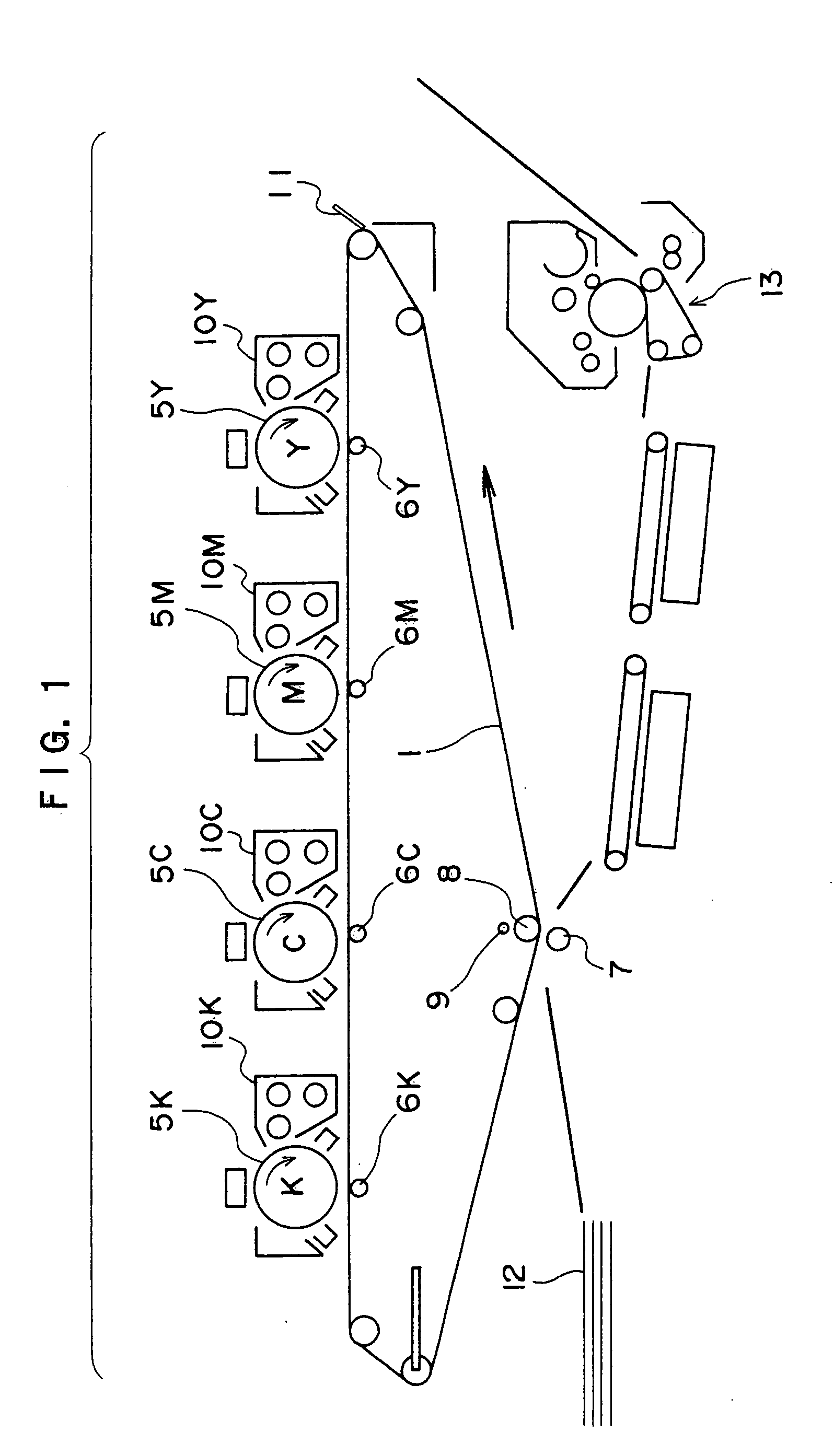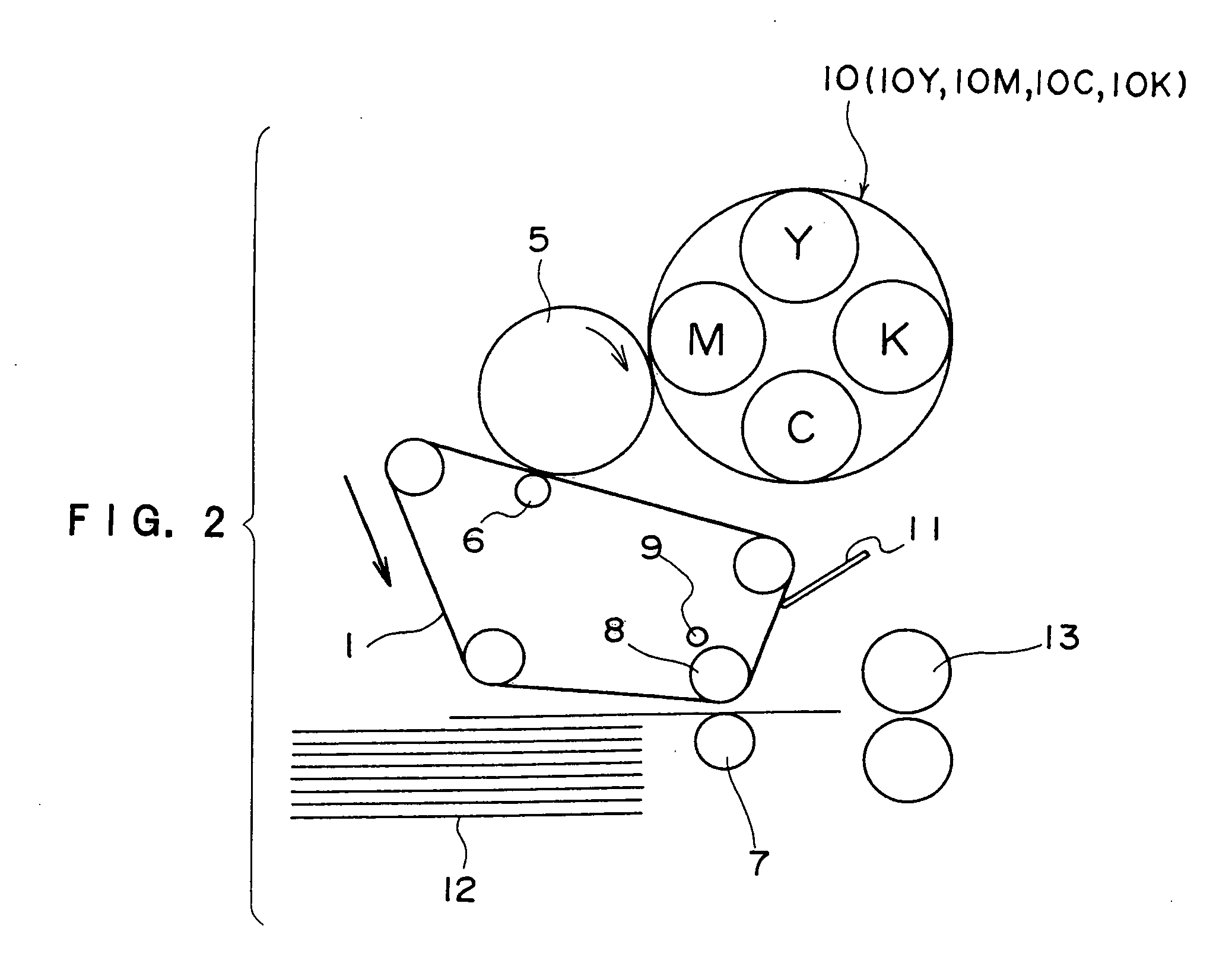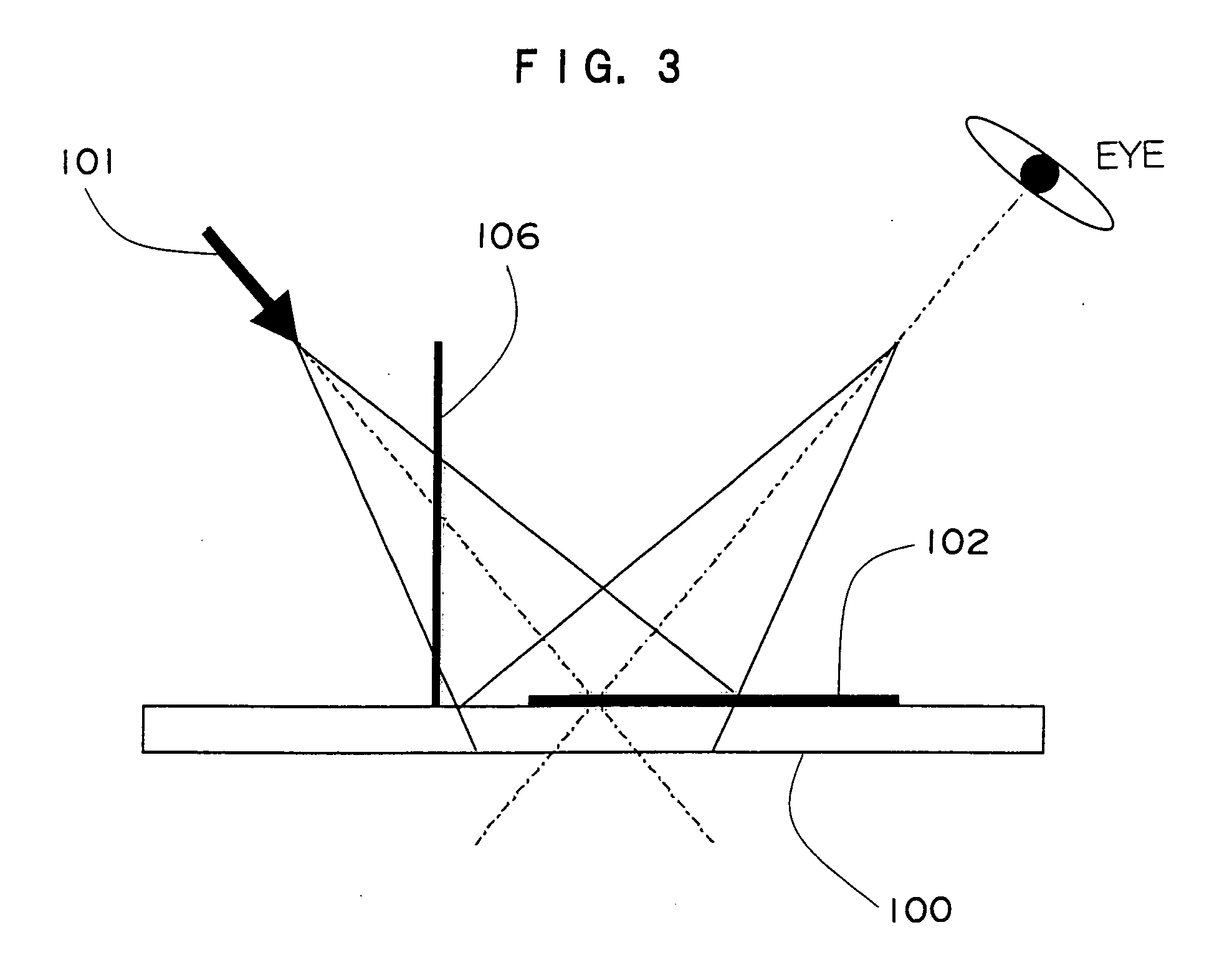Intermediate transfer belt, production method thereof, and image-forming device using the intermediate transfer belt
a transfer belt and intermediate technology, applied in the direction of electrographic process, electrographic process apparatus, instruments, etc., can solve the problems of shortening the pot life of the solution (film forming solution) drastically, generating gel, and not being easy to remov
- Summary
- Abstract
- Description
- Claims
- Application Information
AI Technical Summary
Benefits of technology
Problems solved by technology
Method used
Image
Examples
example 1
[0207] 3,3′,4,4′-biphenyltetracarboxylic dianhydride (BPDA) and pyromellitic dianhydride (PMDA) is added to a DMAc solution of 4,4′-diaminodiphenylether (ODA), and the mixture is stirred sufficiently under nitrogen atmosphere. The molar ratio of ODA:BPDA:PMDA is 1.00:0.55:0.45, and thus, a polyamic acid solution (A-1) at a concentration of 20 mass % is obtained.
[0208] Panipol PA manufactured by Panipol is made available as undoped polyaniline.
[0209] Separately, para-phenolsulfonic acid in an amount of 30% by mole equivalence of the undoped polyaniline (in other words, 60% mole equivalences with respect to 100% of half of the undoped polyaniline) is made available as dopant. The para-phenolsulfonic acid is added to and stirred in DMAc solvent under nitrogen atmosphere, to give a homogenous dopant solution at a concentration of 5 mass %.
[0210] An undoped polyaniline, Panipol PA manufacture by Panipol, is pulverized in a dry jet mill. The dry jet mill used is a counter jet mill (typ...
example 2
[0219] An intermediate transfer belt of Example 2 is prepared in a similar manner to Example 1, except that the polyaniline dispersion (B-1) used in Example 1 is replaced with the following polyaniline dispersion (B-2).
[0220] Part of the polyaniline particles collected in the product-collecting unit-1 (Φ100 cyclone) in the pulverized polyaniline obtained during preparation of the polyaniline dispersion (B-1) is collected as the second polyaniline particles; and a small portion thereof is dispersed in ethanol. Analysis of the particle size distribution of the second polyaniline particles shows that the 50 percentile particle diameter (volume basis) is 2.7 μm; the 90 percentile particle diameter, 4.3 μm, and the 100 percentile particle diameter (volume basis), 7.7 μm.
[0221] Then, 250 parts by mass of the pulverized second polyaniline particles and 25 parts by mass of PVP (polyvinylpyrrolidone) are added gradually under nitrogen atmosphere to the dopant solution at a concentration of...
example 3
[0288] A conductive coating agent aquaPASS-01 (aqueous solution of polyaniline sulfonic acid) manufactured by Mitsubishi Rayon Co., Ltd. is dried and pulverized, for example, in an evaporator, to give a powdery polyaniline sulfonic acid (PAS; average molecular weight: 10,000, average diameter: approximately 9 μm) as self-doping polyaniline.
[0289] The self-doping polyaniline, powdery polyaniline sulfonic acid, is pulverized in a dry jet mill. The dry jet mill used is a counter jet mill (type 100AFG) manufactured by Hosokawamicron Corporation.
[0290] The counter jet mill contains (1) a raw material-supplying unit FTS-20, (2) a counter jet mill 100AFG, (3) a product-collecting unit-1 (Φ100 cyclone), (4) a product-collecting unit-2 (P-bag: filtration area: 2.3 square meter), and (5) an exhaust blower. The main conditions for pulverization are as follows: pulverization air flow: 100 cubic meters per minute, air pressure: 600 kPa, and classification rotational velocity: 20,000 rpm.
[0291...
PUM
 Login to View More
Login to View More Abstract
Description
Claims
Application Information
 Login to View More
Login to View More - R&D
- Intellectual Property
- Life Sciences
- Materials
- Tech Scout
- Unparalleled Data Quality
- Higher Quality Content
- 60% Fewer Hallucinations
Browse by: Latest US Patents, China's latest patents, Technical Efficacy Thesaurus, Application Domain, Technology Topic, Popular Technical Reports.
© 2025 PatSnap. All rights reserved.Legal|Privacy policy|Modern Slavery Act Transparency Statement|Sitemap|About US| Contact US: help@patsnap.com



